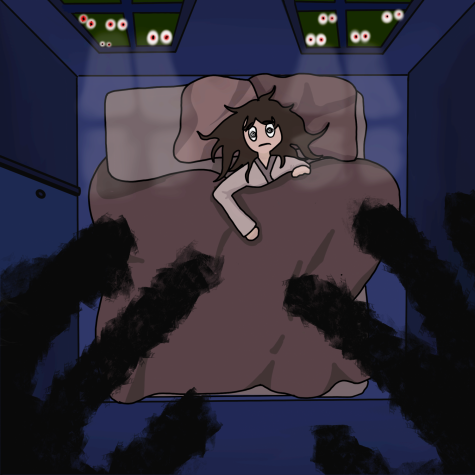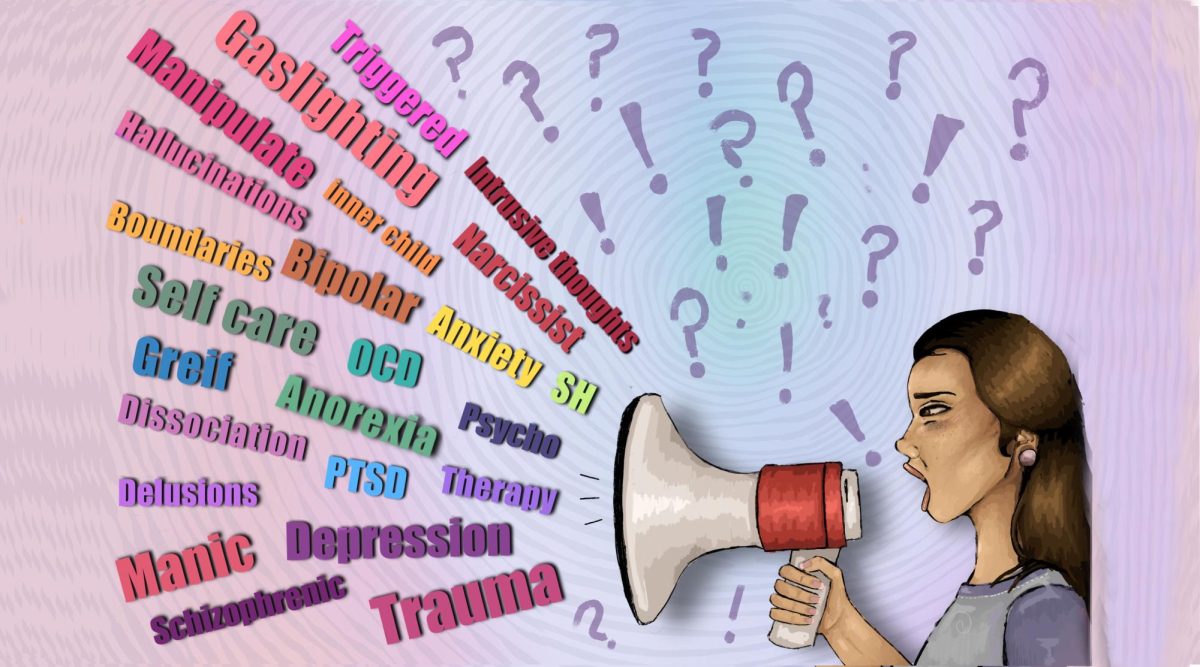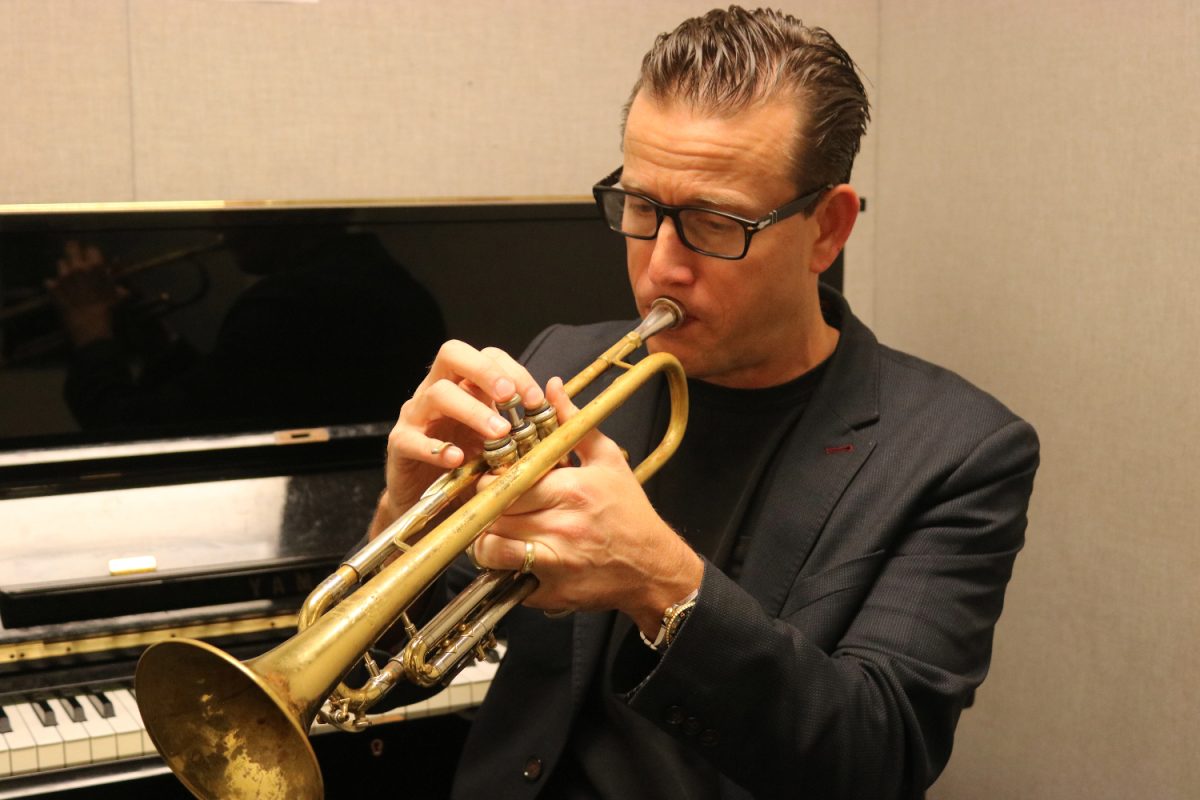You are being chased by a tall man with red eyes who surely wants you dead. He grabs your neck, and his cold knife touches your bare skin. As terror seizes you, you scream and open your eyes.
You’re safe in bed. It was just another nightmare.
Nightmares are experienced by roughly 50% to 85% of adults every night, according to Sleep Education. Like most dreams, they occur during a period of our sleep called rapid eye movement (REM), a part of the sleep cycle that one enters approximately 90 minutes after falling asleep. According to the National Institute of Neurological Disorders and Stroke (NIH), during REM sleep, eyes move rapidly and breathing becomes faster as the heartbeat increases to near waking levels.
Scott Edwards, a freelance science writer, describes how nightmares are remembered in ‘Nightmares and the Brain.’
“As we prepare to awaken, memories begin to integrate and consolidate,” Edwards said. “We dream as we emerge from REM sleep. Because we tend to dream on the sleep-wake cusp, images imagined while dreaming, including the vivid, often terrifying images produced during nightmares, are remembered.”
While all age groups experience REM, nightmares most commonly appear in children between the ages of 3 and 6. According to the Cleveland Clinic, younger kids have a higher chance of nightmares about being separated from their parents or seeing a scary monster. Older kids are more likely to have nightmares about scary movies or upcoming stressors such as starting at a new school.
Kalindi Malcolm, an associate marriage and family therapist, talks about the impact of nightmares depending on the age group.
“If you are under the age of 12, you are more fearful of separation, like separation anxiety versus when you are older than that, you are more likely to be afraid of things that aren’t so rooted in your connection to your parents,” Malcolm said.
The exact cause of nightmares is currently unknown to researchers. However, there seems to be a strong correlation with mental health, as the Mayo Clinic claims that nightmares are usually accompanied by such factors as stress, sleep deprivation, anxiety, and trauma.
Mai Haller, a sophomore at Carlmont High School, sees the relationship between nightmares and her traumas.
“I have nightmares a few times a week,” Haller said. “My nightmares reflect my life but are mixed with trauma. Knowing the bliss of [my] ‘new’ life and going back to the horrors of my ‘past’ life is what my nightmares are usually about.”
Despite the mystery surrounding their cause, the effects of nightmares are apparent. According to the Mayo Clinic, nightmares can cause daytime sleepiness, difficulties concentrating, and mood swings. Some people may resist sleeping for fear that their nightmares will recur. In severe cases, even suicidal thoughts may occur.

Priya Khosla, a sophomore at Carlmont High School, talks about the impact nightmare has on her ability to sleep.
“When I wake up from a nightmare, I feel very scared to fall back asleep,” Khosla said. “Nightmares are sometimes hard to differentiate from reality, and it worries me that I could dream about it again.”
As many, including Khosla, find it challenging to differentiate nightmares from reality, Malcolm explains why the separation between the two may come as difficult.
“Sometimes it’s hard to tell the difference between a dream and what’s happening in real life because somatically, what’s happening in our body like sweating, heavy breathing, our physiological responses to dreaming aren’t much different than what’s happening when we are awake,” Malcolm said.
Another study by the Sleep Foundation shows that nightmares are more common for women than for men. Sleep researcher Rosalind Cartwright agrees. While speaking to ABC News, women pay more attention to their feelings and are usually more self-critical. By taking these thoughts and feelings with them to their sleep, women are more likely to experience nightmares about similar topics.
As men tend to be less self-critical, leading to less chance of having a nightmare, Zachary Taylor, a junior at Carlmont High School, also has unusual nightmares.
“I have nightmares about once a month. My nightmares are so uncommon that I don’t think there is a noticeable relationship between dreaming and school activities,” Taylor said.
Despite the role gender plays in the recurrence of nightmares, both women and men have similar kinds of nightmares. Amerisleep conducted a survey of 2,000 people, asking them about their nightmares. The most common nightmare is one in which the dreamer is falling, something 64.7% of respondents reported experiencing. The next most common nightmares are those of being chased (63.3%) and those of experiencing death (54.9%).
Fortunately, there are several ways to deal with nightmares. According to the Mayo Clinic, establishing a regular bedtime routine is the best way to prevent nightmares. Calming thoughts with mindful exercises such as yoga is another effective tactic. However, the important thing is never to give up the fight for restful sleep.
“I like to think of nightmares as a fight against your consciousness,” Kholsa said. “Once you fight and win over your current stressor or whatever is bothering you, nightmares won’t come for you every night.”













